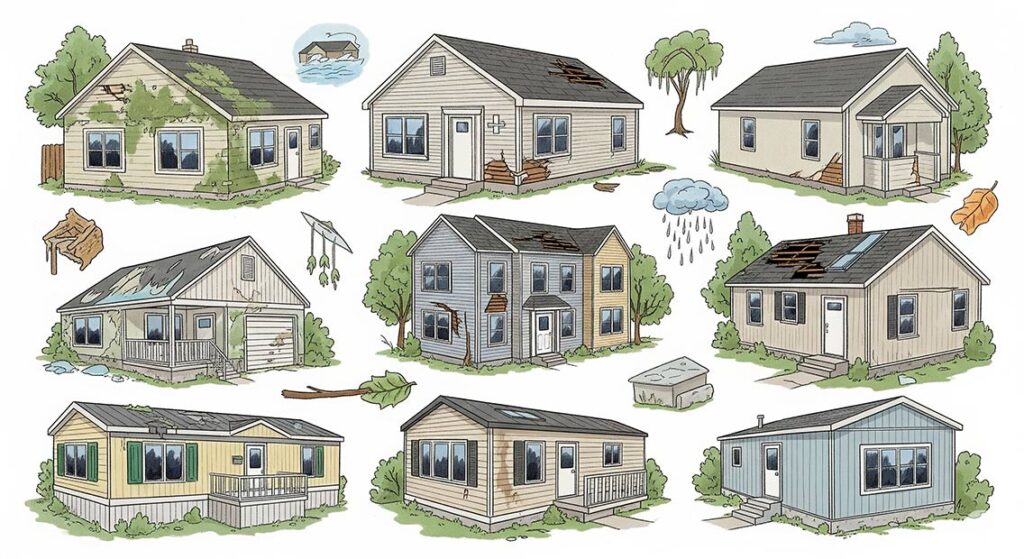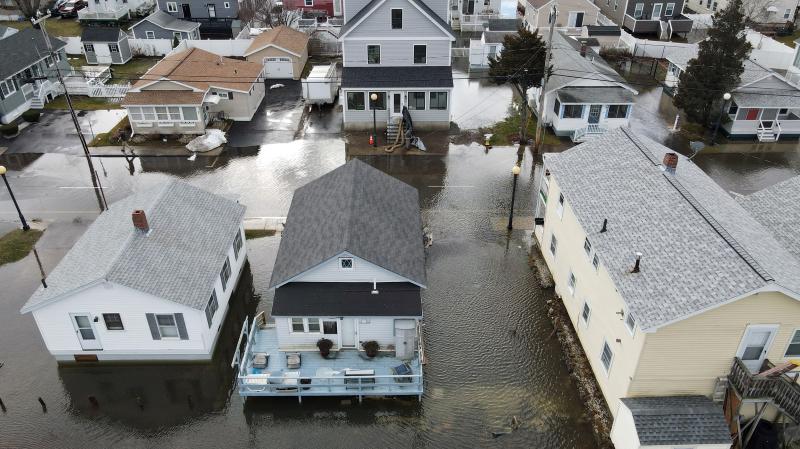When it comes to property maintenance and renovation, understanding the effects of climate is essential, particularly in countries experiencing the four seasons—spring, summer, autumn, and winter. Each season brings unique weather patterns that can accelerate the deterioration of building materials, affect structural integrity, and influence both internal and external remodeling decisions. This guide explores how climatic factors impact properties, what homeowners and professionals should watch for, and how to best approach construction and renovation to withstand seasonal changes.
The Four Seasons and Their Unique Challenges to Property Durability
Countries with four distinct seasons face fluctuating weather conditions such as freezing winters with snow and ice, hot summers with intense sunlight, spring rains, and autumn temperature drops. These shifts create repetitive thermal and moisture cycles that challenge building materials and structures.
Winter: Freeze-Thaw Cycles and Moisture Penetration
In winter, freezing temperatures cause water trapped in cracks or pores within materials to freeze, expand, and widen those fissures, known as the freeze-thaw cycle. This process deteriorates concrete, bricks, wood, and sealants, leading to:
- Cracking in foundations and walls
- Loosening of mortar in masonry
- Warping or splitting in wooden structures
- Increased risk of water infiltration when snow melts
Moreover, heavy snow and ice accumulation increase load stress on roofs and external structures, potentially causing sagging or collapse if buildings are not designed for such conditions.
Spring: Rain, Humidity, and Mold Risks
Spring often brings substantial rainfall and humidity, increasing the risk of water absorption through exterior surfaces. Persistent moisture exposure can:
- Accelerate corrosion of metal structures like steel reinforcements and fasteners
- Promote wood rot and fungal decay internally and externally
- Weaken foundations via soil saturation leading to erosion or settlement problems
Proper waterproofing, drainage systems, and ventilation are critical during this season to prevent long-term damage.
Summer: Heat, UV Radiation, and Material Expansion
High temperatures and UV exposure during summer lead to:
- Expansion and contraction of elements like concrete, brick, and steel, inducing micro-cracks
- Accelerated erosion and degradation of exterior paint, coatings, and wood finishes due to UV damage
- Increased risk of material fatigue due to repetitive thermal cycling, which reduces mechanical properties and strength
This season demands heat-resistant materials and protective coatings to maintain durability and aesthetic quality.
Autumn: Temperature Fluctuations and Preparation for Winter
Autumn is a transitional season with large daily temperature swings that further cause:
- Expansion and contraction stresses in materials
- Increased potential for water infiltration as rain accompanies cooler air temperatures
It is also the ideal time for maintenance checks and preventive renovations to prepare properties for harsher winter conditions.
How Climate Accelerates Structural and Material Deterioration.

Thermal Expansion and Mechanical Stress
One of the main drivers of structural degradation in seasonal climates is the thermal expansion and contraction of building materials such as steel, concrete, wood, and polymers. Repeated temperature fluctuations cause:
- Development of cracks in load-bearing elements
- Loss of adhesive strength in joints and sealants
- Fatigue and eventual failure of structural components under cyclic stress
Materials like polymers show pronounced changes in properties after glass transition temperatures, affecting their mechanical behavior under climate stress. This makes it important to select construction materials designed to endure these cycles in four-season climates.
Moisture and Water Damage
Water is a potent agent of deterioration. Seasonal precipitation, snowmelt, and humidity increase risks of:
- Foundation erosion and soil subsidence compromising structural stability
- Mold growth affecting indoor air quality and interior finishes
- Corrosion of metallic reinforcements that weakens structural resilience
Proper site drainage, moisture barriers, and ventilation are fundamental to combating these issues.
Load Stress from Snow and Wind
Storms, especially in winter and transitional seasons, bring:
- Increased wind loads causing aerodynamic stress and potential fatigue on high structures and roof elements1
- Snow and ice loads that may exceed original design parameters, increasing risk of collapse or deformation1
Regular inspections and reinforcement can mitigate these risks.
Effects on Remodeling and Renovation: Interior and Exterior Considerations
External Remodeling Challenges
Exterior renovations in four-season climates must address:
- Selection of durable, weather-resistant materials like fiber cement siding, treated wood, or composites
- Use of high-performance paints and sealants that resist UV radiation and moisture infiltration
- Structural reinforcements to support heavier winter snow loads and wind stresses
- Installation of effective drainage systems to divert rain and melting snow away from foundations
Failing to consider these issues can result in premature degradation and costly repairs.
Interior Renovation Influences
Though interiors are more protected, seasonal climate influences include:
- Increased humidity affecting drywall, paint, and wood finishes, especially in basements and poorly ventilated areas
- Thermal expansion impacting flooring materials and interior fixtures
- Potential mold growth in damp conditions requiring mold-resistant materials and ventilation upgrades
Designing interior renovations with seasonal climate in mind improves longevity and comfort.
Preventive Strategies for Mitigating Climate-Induced Deterioration
To extend the life and performance of properties in regions with four seasons, homeowners and renovators should adopt these best practices:
- Use climate-adapted materials engineered for thermal cycling and moisture resistance
- Incorporate thermal insulation and vapor barriers to reduce interior condensation and energy loss
- Maintain gutters, downspouts, and drainage systems regularly to prevent water intrusion
- Schedule seasonal inspections focused on detecting cracks, moisture accumulation, and structural deformations
- Upgrade roofing to materials rated for snow loads and UV exposure
- Implement ventilation solutions to control indoor humidity and promote drying
Expert Tips on Managing Property Deterioration Due to Seasonal Climate
1. Understand Local Climate Challenges and Strengthen Roof Systems
Architect Nathan Kipnis emphasizes the importance of focusing on local climate specifics, such as high winds, thermal extremes, flooding, and snow. For cold, snowy regions, he recommends installing strong roof systems and oversized gutters/downspouts (4-5 inches) along with enhanced insulation and backup power solutions. These measures help mitigate winter-related deterioration and power outages.
2. Monitor and Address Seasonal Structural Movement and Moisture Issues
Surveyors at WR Surveying explain how different seasons affect properties: winter leads to damp and condensation problems; spring causes ground thaw and settling that may trigger cracks; summer results in soil shrinkage affecting foundations due to dry conditions. They advise regular inspections, gutter cleaning, ventilation improvements, and foundation monitoring to prevent costly damage.
3. Conduct Proactive Seasonal Maintenance to Preserve Structural Integrity
A Content Media Solution article highlights the value of seasonal property maintenance in preserving safety, comfort, and value. The article stresses managing thermal expansion in summer and monsoon-related moisture damage, emphasizing early problem detection, system efficiency checks, and sustainable practices.
4. Prepare Investment Properties for Autumn and Winter Wear
The Agency advises landlords to proactively check heating systems before cold seasons, seal drafts, clear gutters, and weatherproof to reduce deterioration risks from rain, cold, and increased moisture. Early maintenance can save expenses and improve tenant comfort.
5. Understand Climate Change Impacts on Property Risk and Value
An analysis by Pvcase outlines how extreme weather events caused by climate change—such as stronger storms, flooding, and wildfires—accelerate property damage, increase insurance costs, and potentially reduce property values. Homeowners should consider these risks when planning renovations or purchasing properties.
Conclusion: The Importance of Climate-Conscious Remodeling and Maintenance
The cyclical nature of the four seasons poses significant challenges to the structural integrity and aesthetics of properties, impacting everything from foundations and roofing to interior finishes. Recognizing how temperature fluctuations, moisture cycles, wind, and UV radiation affect materials and construction components enables smarter decision-making in remodeling and home renovation projects.
Ultimately, climate-aware construction practices and ongoing maintenance tailored to seasonal stressors safeguard investments, enhance durability, and create safer, more comfortable living environments.
Protect and Preserve Your Property Against Seasonal Climate Damage!
Seasonal weather changes can seriously impact your home’s structure, materials, and overall integrity. From freeze-thaw cycles in winter to moisture and UV damage in summer, every season poses unique challenges that can accelerate property deterioration if not properly managed.
Whether you’re planning a remodeling project, need expert home renovation advice, or want to implement preventive measures that safeguard your investment — our team is ready to help you maintain a durable, beautiful, and comfortable home all year round.
Don’t wait until minor issues become costly repairs. Get a personalized evaluation and expert solutions tailored to your climate and property needs.
📧 Contact us today at info@groupdecora.com
Let’s work together to protect your home from seasonal wear and keep your property in top condition.






Leave a Reply